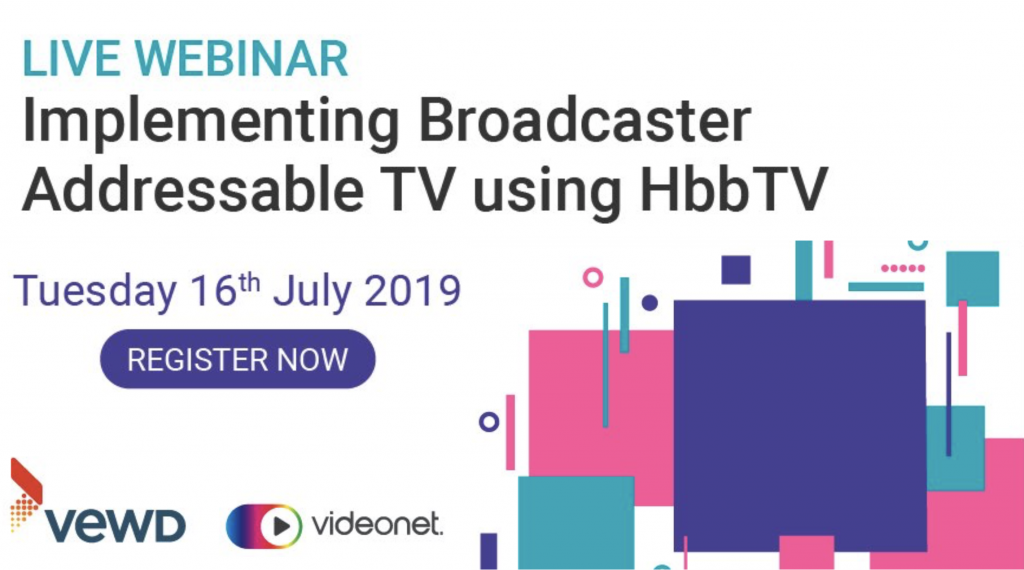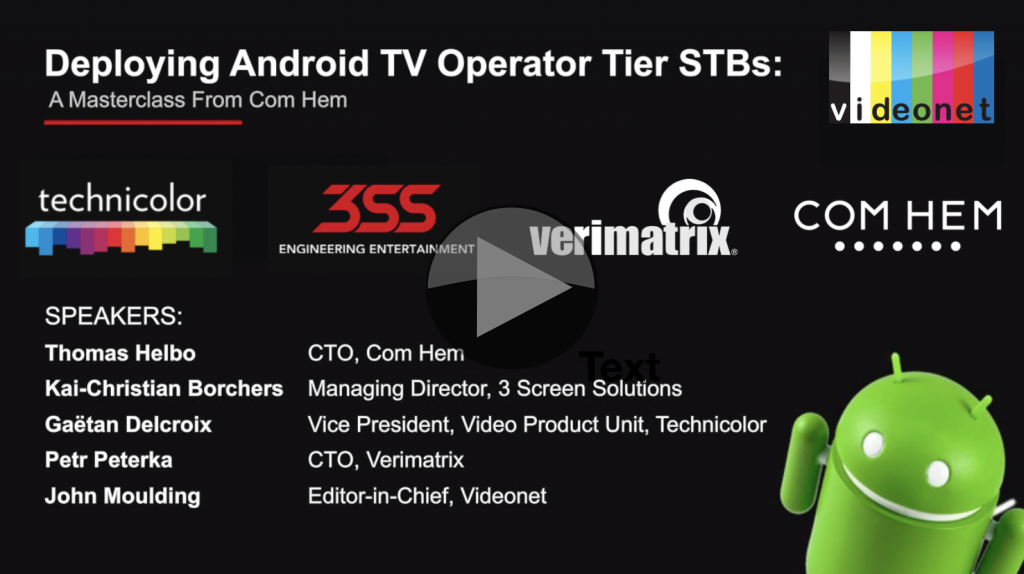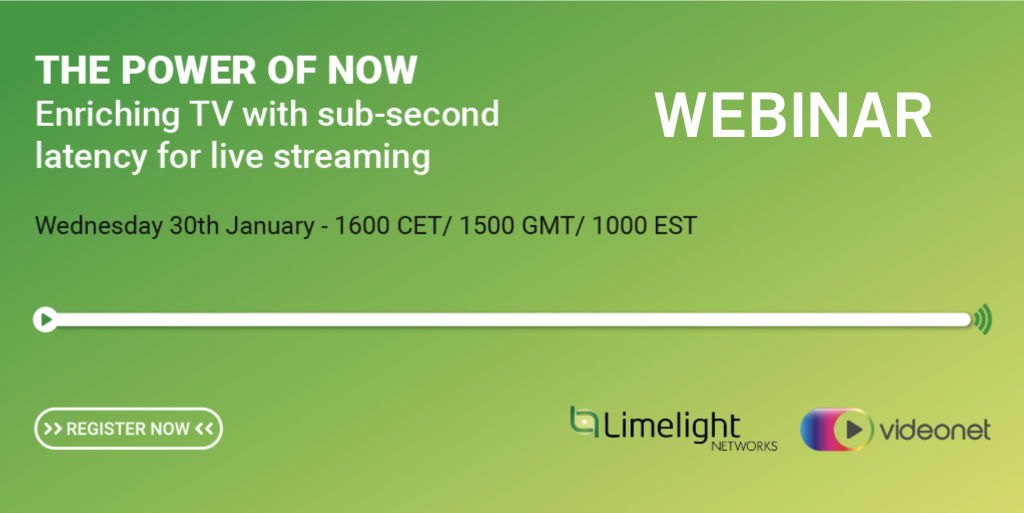HbbTV combines over-the-air TV with internet-delivered services which viewers see as a single, seamless service. HbbTV – which stands for Hybrid Broadcast Broadband TV – is a standardised way to deliver internet-enhanced over-the-air television to homes.
Date: Tuesday 16th July, 14:00 BST / 15:00 CEST
Now on version 2.0.1, HbbTV has been adopted around the world. The UK has the Freeview Play live and on-demand service based on HbbTV 2.0, delivered over satellite. New Zealand and Australia also have a Freeview-labelled service. Turkey and Saudi Arabia have services on HbbTV and Finland has been on air sine 2013 with HbbTV.
This webinar looks at what’s new in 2.0.1 and focusses on the possibilities of targeted advertising, highlighting the RTL Group’s world first swapping over-the-air ads for internet-delivered adverts.
This webcast will discuss:
- The benefits of a standards-based ad insertion solution for the TV and device market
- Market penetration of HbbTV devices that support IP-into-broadcast content substitution, including free-to-air hybrid set-top boxes, smart TVs and connected TV streaming devices
- Technology capabilities within the HbbTV 2.0.1 standard, including how to implement HbbTV-enabled addressable TV
- The rationale for including HbbTV ad insertion on devices that already include broadcaster OTT apps
- Compatibility and interoperability between HbbTV and the broadcast backoffice and associated ad-tech
- Efforts to include HbbTV ad insertion in the new HbbTV-TA (Targeted Advertising) standard
Speakers
 |
Henry Rivero VP Advanced Advertising & Innovation, RTL Group |
 |
Frode Hernes SVP of Product Management, Vewd |
 |
Leon Siotis GM Revenue Europe. SpotX |
 |
John Moulding Editor-in-Chief VideoNet |












